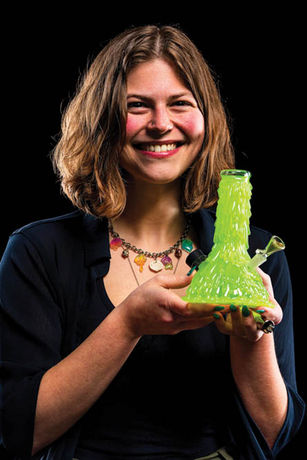Lacy Wilcox is a professional and passionate Cannabis advocate who has worn many hats, including her time in state service, raising children, building a licensed Cannabis operation with her husband and partners, and volunteering as the elected President of the Alaska Marijuana Industry Association. To say she’s an insider is an understatement, and if her experience and titles tell you anything, it’s that she’s involved in a wide array of issues the Cannabis industry is facing and working to make things better for consumers, business owners, and the industry as a whole.
To celebrate her contributions to the industry and tap into her vast areas of experience and knowledge, we sat down for a series of Zooms to discuss the history of the AMIA, pressing issues like a potential license cap and federal legalization, and hear Wilcox’s thoughts on how the craft Alaskan market can compete and thrive in the unwritten future of Cannabis legalization. While this interview spans six pages and many important topics, we actually had to edit our conversation down to fit – and will be revisiting these topics and more in the future with a monthly AMIA Industry Issues column debuting this winter.
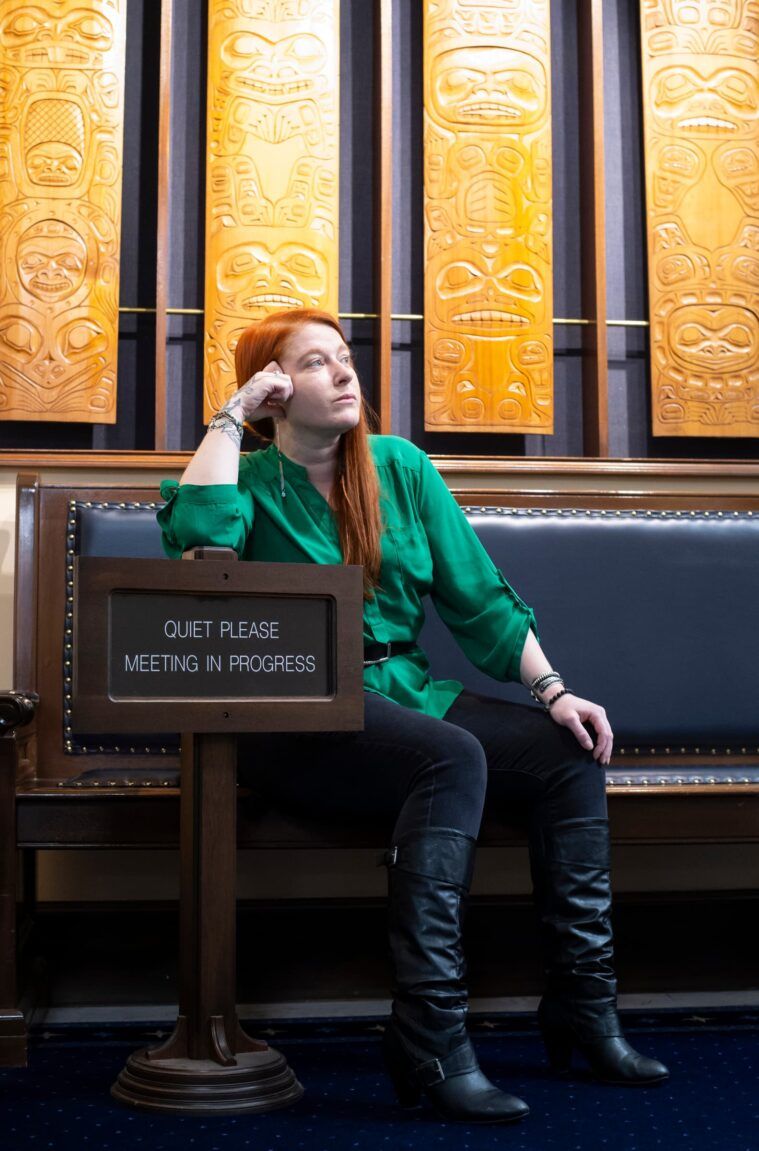
How did Cannabis become a part of your life and future?
I’m from a place in Alaska where Cannabis culture was really thriving … Homer, where if you were ever to do a deep history dive, you’d see that one of our Cannabis pioneers of constitutional protection, Irwin Ravin, sued the State of Alaska and established our right to have Cannabis in our homes. People down there are a bunch of hippies and eccentrics and artists, and by the time I grew into high school age, my parents said, ‘You better be careful, you could go to jail for smoking pot.’ And I was surprised. I thought, well, everyone is doing it – I didn’t know it was illegal and I grew up thinking it was normal.
What changed your view on whether our plant should be legal vs illegal?
There was this moment where I looked at my wheelchair-bound grandmother and she was holding a medical pill bottle, and said, ‘Don’t open that.’ So I said, ‘Let me see what’s in there,’ and it was some ganja. She said, ‘It helps with my pain but don’t tell anybody, because I’ve got a real job and I’m a part of my community and church, and I don’t want to get in trouble or go to jail.’ There was a ballot measure around that time to legalize that failed, and long story short, the history was there – where I thought, ‘This shouldn’t be illegal, and my sweet little grandmother shouldn’t be in fear of going to jail for using her medicine.’
What was your time in government like, and what did you do for the state?
My background was in state government and I worked at the Department of Revenue for 12 years before going on to Cannabis, with a high focus on oil and gas taxes and production – so my life was pretty bean-counting boring. And I’ll be honest, this is not a secret: To cope with that, I was a heavy consumer of Cannabis. I used to tell people that if I didn’t smoke Cannabis, I wouldn’t be able to hold down that job, because it wasn’t fun. I’m one of those people who is better when using Cannabis, and that’s not for everybody, but I didn’t hide it.
How did you end up involved with the politics of Cannabis?
Coming up in state-level politics – where I’ve only ever worked for Republican governors or conservative lawmakers – their buttons are pretty tight and they’re pretty nervous about Cannabis. The same election, Alaskans got to choose a new governor and whether or not to legalize Cannabis – they chose both, and they both went into effect within a month of each other. I was just a person working in state government, but the new governor, Bill Walker, was coming in to take his seat and I had accepted a promotion into his office as a Deputy Legislative Director. That job is to shepherd all kinds of legislation around between the Executive Branch and Legislative Branch, make sure that the conversations are happening correctly, stakeholders are engaged, and that everything legislatively was going smoothly.
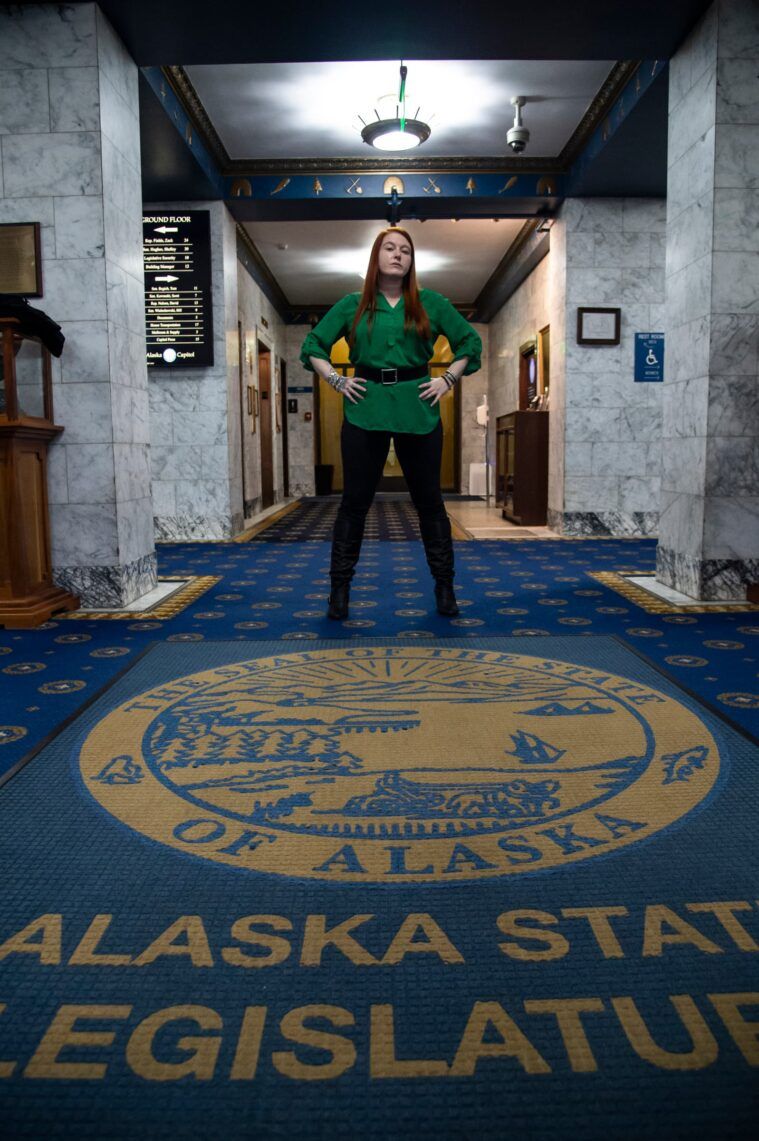
Did the new governor or legislature have any idea how to regulate the industry, or know anything about Cannabis?
These lawmakers are a different generation than me – for the most part conservative people, not necessarily by party, but as people. There wasn’t anyone raising their hand to say, ‘I know something about Cannabis.’ And I was honest and said that I did – as a consumer and with my husband who is a medical patient and grower. I’ve been consuming Cannabis longer than I should probably admit, so I decided not to be scared and raised my hand.
That gave you the opportunity to help regulate this new industry – what were the first steps?
When the ballot measure passed, there was no infrastructure – there was no board to regulate it, no agency that would be specific to regulating legal Cannabis. With no state department set up, it was by default instructed in the measure that the Alcohol Board would regulate Cannabis, so my first priority was to get another board created specific to Cannabis. That was the first piece of legislation that was successful from Governor Walker’s administration: to create the Marijuana Control Board and appoint its first members. As the Legislative Liaison, I shepherded that bill through, got it passed, and then strangely things would have it that the person whose job it was to appoint members to any board (fish board, tree board, radio board, etc) had to leave state service. So, I stepped forward to take that duty and did two jobs, becoming the Boards and Commissions Director, and interviewed and recommended the first round of Marijuana Control Board Members for the Governor to appoint.
Was there a lot of reefer madness during the process of building regulations?
Everyone in high positions of government was really nervous. They would say things like ‘babies are going to die if they eat a gummy,’ and I’d be sitting there rolling my eyes. I was trying to be in the capitol building and not get kicked out, while educating lawmakers about what Cannabis is and isn’t. One day at a Senate Finance Committee, a lawmaker was saying, ‘We have to stop this legalization before somebody dies.’ So I thought, we have to have somebody who we can call to testify and defend against the reefer madness. We found a group that had been established, the Coalition for Responsible Cannabis Legislation founded by early players like Bruce Schulte, Brandon Emmett, Kim Kole, Jana Weltzin, to be ready to go into committees and give testimony at every committee, city council meeting and rotary debate – to make sure they are hearing from Alaskans to do the myth-busting about what Cannabis really is.
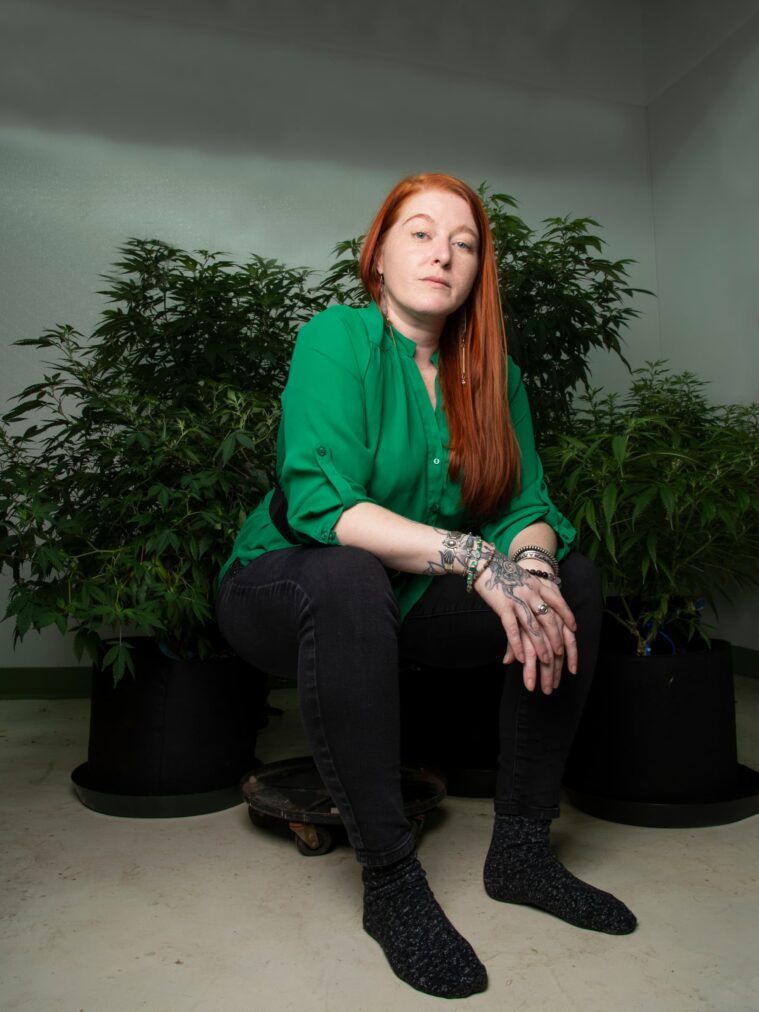
How did that lead to the Alaska Marijuana Industry Association being formed?
Fast forward, CRCO wasn’t needed because we did all that work, and it became time to pivot the advocacy arm of CRCO into a trade group. So Schulte and Emmett switched it up and turned it into the AMIA – changed its status, registered as a trade association – and has been operating pretty nicely since then.
What does the AMIA do for the industry and consumers of Cannabis?
The AMIA is the only trade group so far in Alaska for legal Cannabis operators. A lot of other states have multiples – California has like 20 – but Alaska is pretty cool, so far we only have one. This means we are really only repping interest from coast to coast of Alaska. We represent all license types all over the state and ancillary businesses. We’re a member-based non-profit, and our primary function is to work with the regulatory level (Dept Commerce, Marijuana Control Board) here in Alaska to make sure that the regulations are not overly burdensome, are fair and necessary, and aren’t coming from a place of fear. And then we also work with the state lawmakers and legislators to make sure that the statutes that govern the regulatory agency are again fair and not punitive, and spur commerce but also protect public health and safety. At the state level, AMIA works on whatever the legislature has control of – which could be taxes, the types of licenses that we are allowed to have, the big bright line sideboards, and then down again to the regulatory level of the minutiae of how we operate.
What’s your role at the AMIA?
I’m the elected president of the association … We have 12 current board members and they elected me to represent them. I am the third president of the AMIA since its inception. Before that I was the legislative liaison for the group and did a lot of the lobbying – now I do that plus whatever else needs to be done. It’s important to note that people think we are paid a lot of money, but everyone who serves on the board of directors, including myself, are volunteers and also contributors – so we pay money to volunteer. So when we get beat up by people who think we aren’t doing enough, they need to know we are only human and doing this in what little spare time that any Cannabis operator has.
Right after the AMIA formed, you actually left government work and had to take a year off of work by law. What was it like to take a break, and help your husband and partners start Top Hat Concentrates?
When I left the government, I had to by law take a year off from influencing policy that I’d worked on in my state service – which meant I couldn’t work on anything! I couldn’t work on oil and gas, mining, health services, criminal justice reform, or Cannabis. I just had to take the year off – you can’t go immediately make money off the things you potentially influenced in your state service. So I bumbled around and helped my husband Ben by taking care of our children, and making sure they had the freedom, space, and knowledge to get his business going. And when my year was up, I came to work for him – which is awesome!
I bet you were ready to jump back into things after a long year of watching from the outside!
AMIA was doing well by then and Carry Carrigan was Executive Director, and when I was a kid he was the weatherman on TV. When I figured that out, I was so excited. We nicknamed him the ‘Kool Aid Man’ because he was such an ‘oh yeah’ kind of guy. He approached me after my year was up, and asked me to join the board on a vacant seat and teach them how to lobby for what we need effectively. So I did, and the rest is history.

“Everyone in high positions of government was really nervous. They would say things like ‘babies are going to die if they eat a gummy,’ and I’d be sitting there rolling my eyes.” ~ Lacy Wilcox
What was the biggest challenge in going from the world of legislature and lobbyist, to represent the uniquely constructed Cannabis community from the other side of the aisle? I
n Alaska, we are not joiners or club people, we are independent. We have these strong opinions, we’re sassy, I’m right you’re wrong – and it’s a tough thing to do to bring people together knowing that you will have disagreements. And these aren’t people who would normally do collaborative group things. There’s the added layer of the Cannabis industry on top, and while I would never disparage the people, there’s a lot of ego and fear in people coming from the black market or a past that speaks to prohibition. Our industry is made up of a colorful swath of individuals who are all in. They scraped together their life savings, people put all their sweat equity and hope into this – so it became really important that even if we were small, that we weren’t divisive. We couldn’t pit ourselves against each other any more than we naturally do, because we’re crazy Alaskans.
As you know from your time in the legislature, an industry without representation or consensus can be easily pushed to the side. How has that affected what the AMIA is able to fight for?
That’s why it feels sometimes like we aren’t fighting loud enough, and I tell people all the time that I won’t fight on an issue unless there’s consensus among us. I’m not going to go to battle when only half of my people are behind me, and the other half are standing in front of me with knives out. The weird thing is that lawmakers notice when an industry is not aligned, and walking arm in arm they notice, and they’re not going to touch us with a 10-foot pole or carry a bill for a group that can’t agree with itself. So the job is to find consensus, and when I do, I carry it forward. When I don’t, I try to have more conversations, more education to try and get there.
When you became the president of the AMIA in September 2019, things had really developed from an early experiment to a growing industry with all sorts of issues to work through. What was your mindset when you stepped into the role?
People always forget that the alcohol industry in Alaska has an industry group called CHARR, and they’ve been a thing for longer than I have been alive. They are still fighting and in the capital talking about industry changes. So the fight is long, we are brand new, and we have so much road ahead. If people thought we would nail legalization and regulations, and be perfect right out of the gate, that’s a lack of experience about industries in general. It takes 20, 30, 40 years to get it right. And that said, no babies have died, these licensees have done an exceptional job to be good stewards of public trust, and now we have earned a reboot to fix issues. That’s what I wanted for us to do. AMIA has to be making change with consensus, that’s where we are strong. Fighting prohibition and walking arm in arm to make changes.
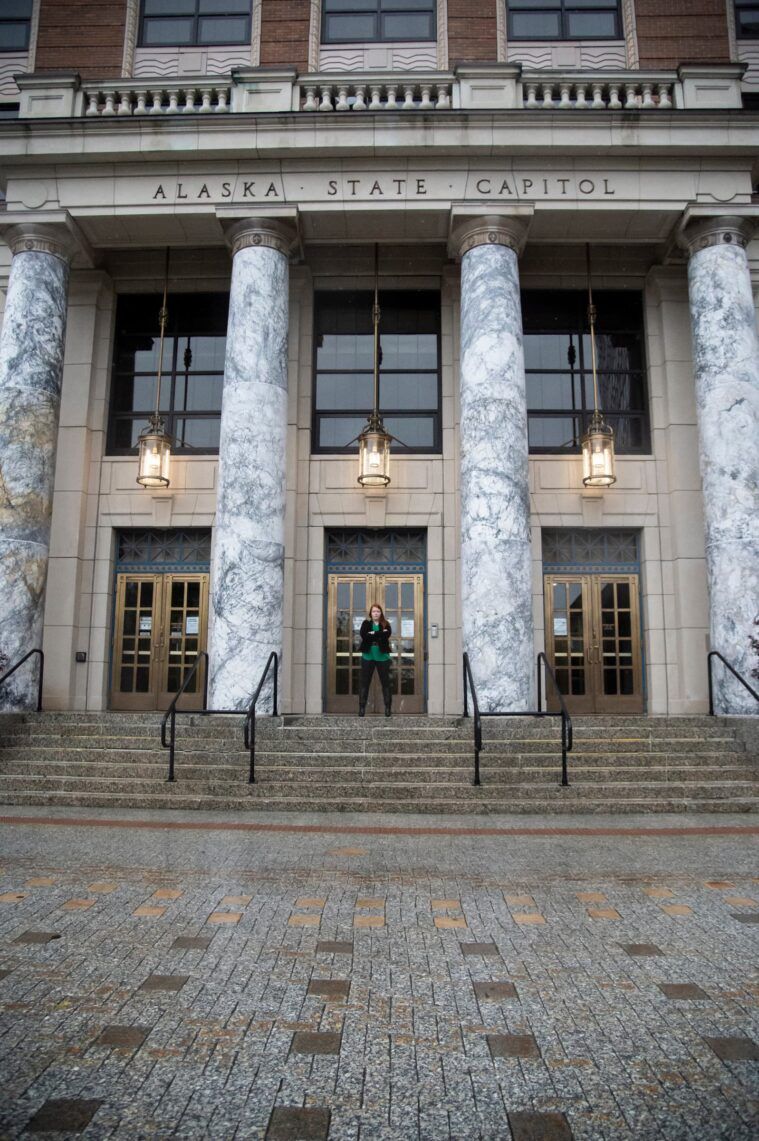
Speaking of changes to the regulations causing division in the industry, there is one phrase that has the whole community in an uproar: license caps. What has been proposed so far?
Let me be clear: There is no proposal. Whether the regulators or the industry, nobody has proposed a particular set of policy outlines for license caps. It is simply at the stage of discussion, and when it was brought to the public’s attention by a fellow board member in her public comment. The fellow board member was then asked, ‘What does that mean to you, when you say that the industry needs this to protect itself from federal legalization?”
What does your question of ‘What does a license cap mean?’ imply, especially when coming from your experience in Government and Legislature? And what might the different types be?
What does the cap look like? Is it population-based? Is it a lottery? Is it a limited entry like fishing? And she said, ‘I don’t know, but we need to be talking about it.’ Maybe it’s just on one license type, maybe it’s just on Anchorage? No model has been proposed by regulators or the industry. The MCB wanted to just hear about it as a high-level concept on if we are interested in caps or not. But it’s hard to know the answer, if it’s a good idea or bad idea, if I don’t know what kind of license cap we are talking about. Is it the same cap type as alcohol, which can lead to big corruption issues, or more of a lottery-style, when you’re done running a license it goes back to the state to be available for the next person? There are license types and caps where the license stays and is worth money, or the kind that gets relinquished back to the state, where the business and brand can still be sold.
What is driving the fear behind the idea of a cap?
When we are talking about license caps, whether one style or another, we need to understand what we are running from. What is it that we are afraid of? Outside competition? Our business not having any value when federal legalization comes? Or here’s my hunch: Are we afraid to compete with our existing neighbors? Are we talking about Anchorage and Spenard and the little green mile, where there’s store after store and those guys are struggling to make money? Are they thinking they would like to limit retailers in that area? That is a zoning issue, a municipality issue. To talk about a city wide limit, those types of limits are due to market saturation and don’t serve to protect us from federal legalization. So there’s two types of conversations happening – there’s the people saying ‘I can’t make a living with this many licenses nearby,’ and the other is, ‘If we don’t do something to add value to our licenses, when legalization occurs, Big Marijuana is going to show up here and run us out of business.’ They’re both genuine concerns, but they are different and the answer will not be one in the same.
In short, what’s your final word on license caps?
Any license cap proposal needs a lot of economic and legal analysis, and while there is so much work to do still, I want it to be done.
Federal legalization, the Cannabis Administration and Opportunity Act and Alaska – thoughts on the new proposed legislation, and how it would change the free-market approach in Alaska? When we came into state-legal Cannabis, it was coming out of every activist’s mouth that we wanted a free market – to not have the same situation occur with alcohol licenses, which have led to gangster shit and an easily corruptible, yucky situation with licenses. So we thought a free market would let the strong survive, and that through attrition and failure, the market would self-regulate, market equilibrium would occur, and the demand would tell us how many there can be. That’s a lot different from full federal commercial legalization where the FDA becomes my boss, the TTB becomes my boss, taxes go through the roof and the only people that can afford to pay are ‘Weedmart.’ Alaskans are states’ rights people, however, I have to talk really carefully about the difference between decriminalization and national legalization – where nobody in this country should go to jail for having Cannabis in their pocket, and that needed to happen decades ago. So when I look at the new act, that’s full federal commercial legalization. They proposed that the Fed be the boss, and there is very little technical analysis and detail on what states primacy will look like. States that hadn’t already legalized could opt out, but if you’re already in, like Alaska or 31 other states, you don’t have any option to say ‘we got it.’ So it wouldn’t allow Alaska to keep a states’ rights approach with fixed banking and 280e, and that’s not what this bill is. So Alaska will probably not be a supporter of a full federal, commercial legalization bill. And then the conversation becomes how to protect ourselves if we lose that argument, and that’s when we are talking about creative ways to protect our little Ma and Pa businesses that have worked really hard to create something beautiful in the place that’s so far away. It’s hard not to say thank you to the senators for trying, but let’s go back to the drawing board and protect our citizens who have been bold and brave and pay taxes to their states. I would hope that those people are at the front of lawmakers’ thinking, and based on that draft, they are clearly not.
What are the differences between an Alaskan market and a federally legalized market?
The fight after the ballot measure was that legalization invited big marijuana and commercial multi-state operators in, so why would we invite a big commercial enterprise that’s only going to cause Alaskans to lose? So it became this huge conversation of how do we make this into an Alaskan industry? Well, we did things like make it a requirement that to participate you have to be an Alaskan resident. But we should all know that when things become federally legal or descheduled, that’s going to be found to be unconstitutional. We’re in a happy bubble where, because of the fact that we’re not federally legal, we could instruct our regulators to not give licenses to people who are not truly Alaskan. We can also instruct our regulators to not accept outside money to fund these businesses. That all is going to change with any kind of federal legalization, and a lot of people are afraid of that. The all-in businesses I talked about are frightened to death that ‘Weedmart’ or Marlboro are going to come into Alaska and put them out of business – which is where the original concept of license caps came up. So that if the fictional ‘Weedmart’ shows up, they would have to come to a local and buy a license, instead of setting up shop next door and competing them out of business. That is a real fear, and the caps wouldn’t keep them from coming – but they could add value to the portfolio of a business that an Alaskan has built off their own back.
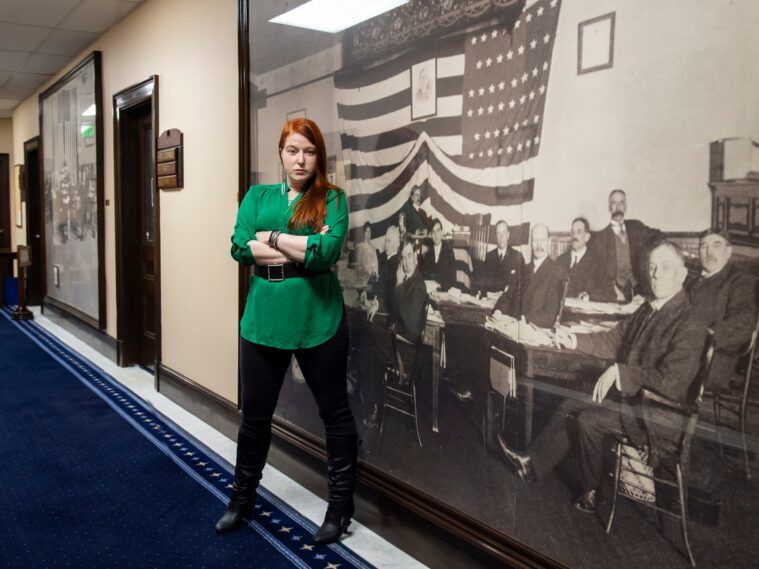
What other issues is the AMIA working on?
What I’m hearing is that we need to be having the conversation about what a healthy market looks like, how to be strong if or when federal legalization occurs, and how to be strong up until then – I want to continue that conversation. Alaska and the AMIA need to be focused on making sure that the existing market we have is fair, and a big conversation for the future is getting a grip on the testing inequality. We have also wanted to focus on taxes, but until there’s agreement, we can’t move forward. We need to continue to peel away the onerous regulations from early on, where regulators were nervous or the prohibitionist mindset led the way. On a personal level, I want to see pesticide testing – but I’m not going to ask the current testing companies to test if we’re not sure they are doing the right job already.
How can people join and support the AMIA?
What the AMIA needs is everybody’s support. We are not an association that wants to battle with each other. We want to find consensus where we can, and when we do, carry the ball down the field. We would love more members, with over 500 statewide licenses we only have 100 members. So let’s double it! We’ve waived membership fees throughout the year, so it doesn’t cost to join – it’s easier than ever to be a part of the organization. There’s no homework for members, just come be a part of the conversation to make the industry better for us all.




